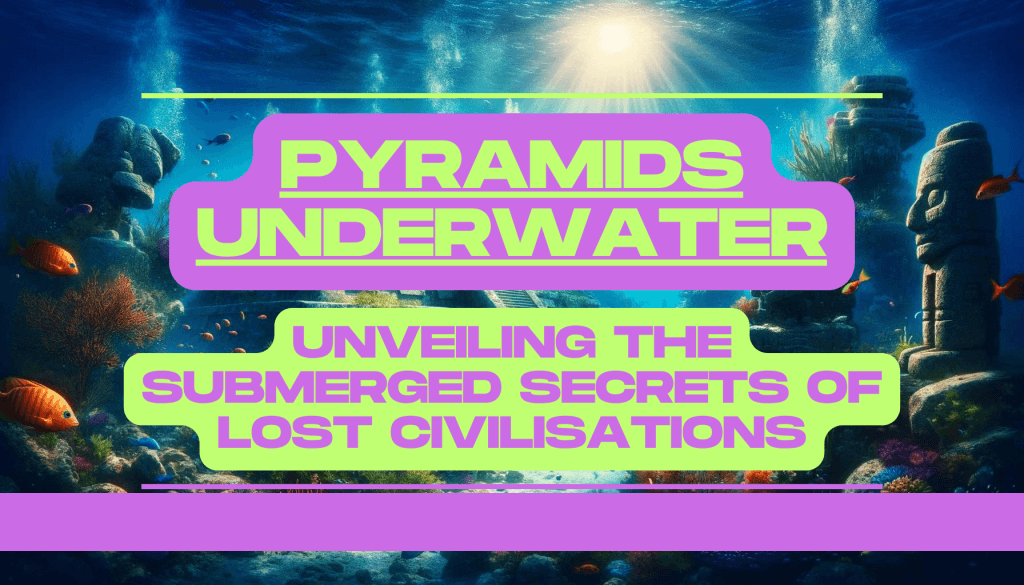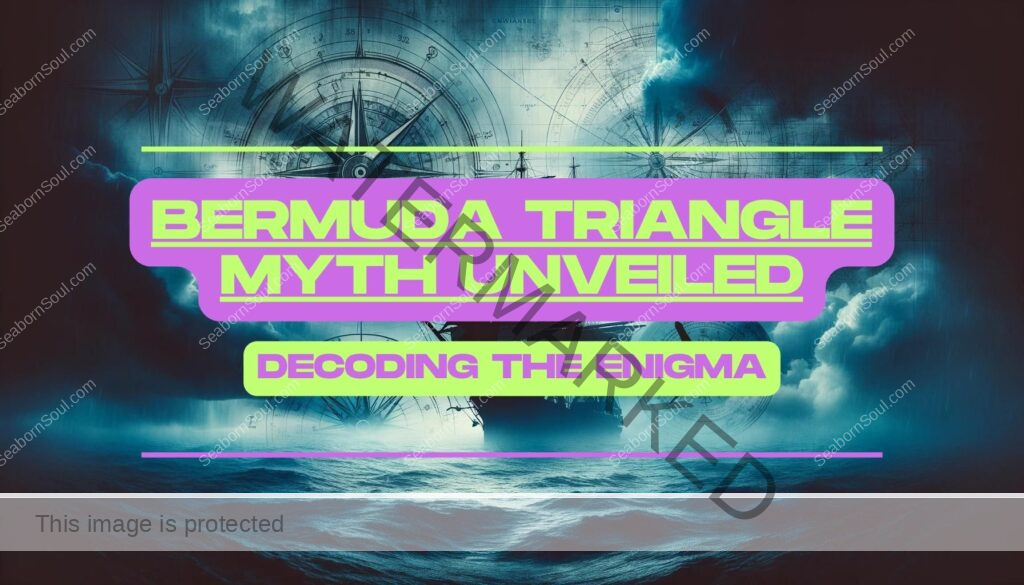Introduction: Beneath the Surface Lies the Forgotten Past
What if some of humanity’s greatest architectural wonders weren’t lost to time—but to the sea?
It’s a question that’s kept both archaeologists and armchair explorers awake at night: Could there be pyramids underwater—real structures, built by ancient hands, now hidden beneath waves and sediment?
The idea might sound like something out of a myth or a sci-fi film, but emerging evidence from around the world suggests it’s not as far-fetched as it seems. From the submerged megaliths off Yonaguni’s coast in Japan to sonar scans revealing possible pyramid-shaped formations near Cuba, there’s growing curiosity—and controversy—around these underwater ruins. Add in the legends of Atlantis, whispers of Lemuria, and stories passed down through generations of seafarers, and suddenly the ocean feels more like a memory vault than an empty abyss.
And let’s be honest: we’ve barely scratched the surface of the ocean floor. With over 80% of the world’s seas still unmapped and unexplored, it’s not just plausible—it’s likely—that remnants of long-lost civilisations lie hidden beneath us. Whether natural formations misread by hopeful minds or genuine remnants of a forgotten past, the topic of pyramids underwater invites us to question what we think we know about history, technology, and the rise—and fall—of ancient cultures.
The Allure of Pyramids Underwater — Why the Ocean Holds Our Forgotten Histories
There’s something undeniably haunting about the thought of pyramids underwater—colossal, human-made structures swallowed by rising seas, lying silent in the ocean’s cradle. It’s not just the mystery that hooks us, but the symbolism. These aren’t just stones beneath the surface—they’re markers of memory, myth, and lost mastery.
For centuries, the sea has been both a giver and a taker of stories. Civilisations flourished along coastlines, tethered to the tides for trade, food, and spiritual meaning. But when the waters rose—or disasters struck—entire worlds were washed away, leaving only scattered relics and the faint echo of oral traditions. It’s no surprise then, that the idea of sunken pyramids, underwater cities, and lost civilisations taps something primal in us: a longing to recover what was forgotten, to reclaim the knowledge drowned with time.
The lure goes beyond archaeology. It slips into legend—Atlantis, Lemuria, and other “vanished lands” that populate myth and esoteric lore. These stories, passed through generations, suggest we might not be the first advanced culture to walk this Earth. Whether taken literally or metaphorically, they reflect a shared human instinct: to believe that the past holds secrets we’ve barely begun to unearth.
And here’s the thing—we’re finally starting to look. With advanced sonar, satellite imaging, and deep-sea drones, researchers are revealing submerged anomalies that defy easy explanation. Some may be natural. Others, perhaps not. Either way, they challenge the official timelines and tempt us to ask bold questions.
Why do so many ancient cultures speak of catastrophic floods? How many coastal sites are now dozens of metres below sea level, waiting quietly in the dark? And if pyramids underwater truly exist—who built them, and what were they trying to tell us?
Documented Discoveries of Pyramids Underwater (Fact, Not Fantasy)
While tales of lost cities and underwater pyramids often get lumped in with fringe theories, there are real-world discoveries that blur the line between speculation and science. These aren’t bedtime stories—they’re geological formations, sonar scans, and dive footage that continue to puzzle archaeologists and ignite imaginations. Some of these submerged sites have been studied for decades, others only recently revealed by advancing technology. Whether they prove the existence of ancient underwater civilisations or simply raise more questions, they serve as anchor points for anyone intrigued by what lies beneath.
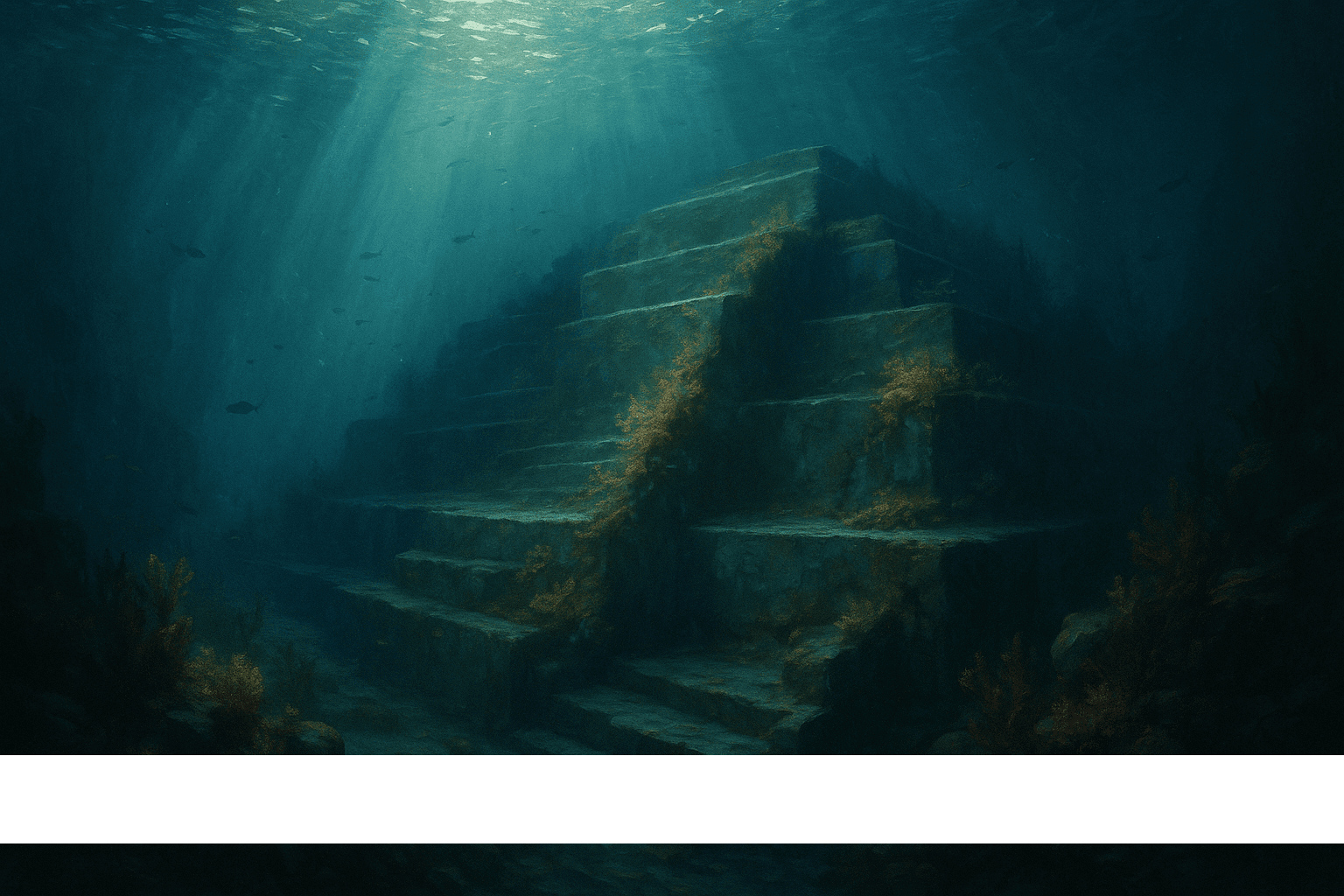
The Yonaguni Monument, Japan – Staircases in the Deep?
Off the coast of Yonaguni, a small island at Japan’s southwestern tip, lies one of the most hotly debated underwater structures in the world. Discovered in 1986 by a local diver, the Yonaguni Monument appears to be a vast stone formation featuring flat surfaces, right angles, pillars, and what looks like a grand staircase—buried beneath the Pacific.
Geologists argue it’s a natural sandstone formation shaped by tectonic and water erosion. But marine archaeologist Professor Masaaki Kimura believes the structure is man-made, possibly dating back over 10,000 years—far older than any known pyramid on land. His team has even identified what they believe to be roads, carvings, and what could resemble a sphinx-like statue.
Regardless of interpretation, Yonaguni remains one of the most compelling examples in the conversation around underwater ruins, forcing us to reconsider the timeline of early civilisation, maritime cultures, and the scale of what might have been lost to rising seas.
To explore the scientific and sceptical viewpoints around Yonaguni, check out National Geographic’s investigation into the monument.
The Cuban Underwater City – Sonar Shadows and Caribbean Secrets
In 2001, ocean engineer Paulina Zelitsky was mapping the sea floor off the western coast of Cuba when sonar equipment revealed something astonishing: geometric structures arranged in patterns that looked suspiciously like a ruined city, resting around 600 metres deep. The data showed symmetrical shapes, pyramidal formations, and what appeared to be roads or avenues.
With some structures measuring over 200 metres across, the discovery ignited waves of media speculation—was this Atlantis? An ancient Caribbean civilisation? A geological coincidence?
Attempts to return with submersible drones were hampered by depth and funding issues, leaving the site poorly studied. To this day, the so-called Cuban underwater city remains a tantalising mystery, suspended between scientific curiosity and historical what-ifs. It’s exactly this sort of partially documented anomaly that keeps the search for pyramids underwater alive.
Egypt’s Sunken Cities – Heracleion and Thonis
While not pyramids, the rediscovery of Heracleion and Thonis—once-thriving port cities in ancient Egypt—adds serious weight to the reality of lost settlements submerged beneath shifting coastlines.
Discovered by underwater archaeologist Franck Goddio in the early 2000s, these cities had vanished beneath the Mediterranean for over 1,000 years, buried under layers of silt and legend. Among the artefacts recovered were towering statues, crumbling temples, and perfectly preserved ceremonial boats—offering a glimpse into an opulent, maritime civilisation that had quite literally vanished beneath the waves.
Although no pyramids were found here, these sunken ruins prove one essential truth: entire cities can and do disappear under the sea. Their rediscovery strengthens the argument that similar pyramidal structures could exist elsewhere, awaiting the right tech—or the right question—to uncover them.
Could Pyramids Really Exist Beneath the Sea? Scientific and Geological Perspectives
It’s one thing to entertain the idea of pyramids underwater as legend—but could such structures actually exist, geologically and historically speaking? Strip away the mythology for a moment, and the question still holds serious weight. After all, vast stretches of what is now sea were once dry, inhabited land. Coastal regions, especially, have always drawn human settlement—and over thousands of years, rising sea levels, tectonic shifts, and natural catastrophes have erased entire chapters of our history from the visible world.
Let’s start with the science that doesn’t get enough attention outside specialist circles.
Sea Level Rise and Submerged Civilisations
Around 12,000 years ago, at the end of the last Ice Age, global sea levels rose by over 120 metres. That’s not a typo—entire continental shelves disappeared beneath water. Much of humanity’s earliest development likely occurred along these now-drowned coastlines, areas that would have provided fertile land, fresh water, and access to trade.
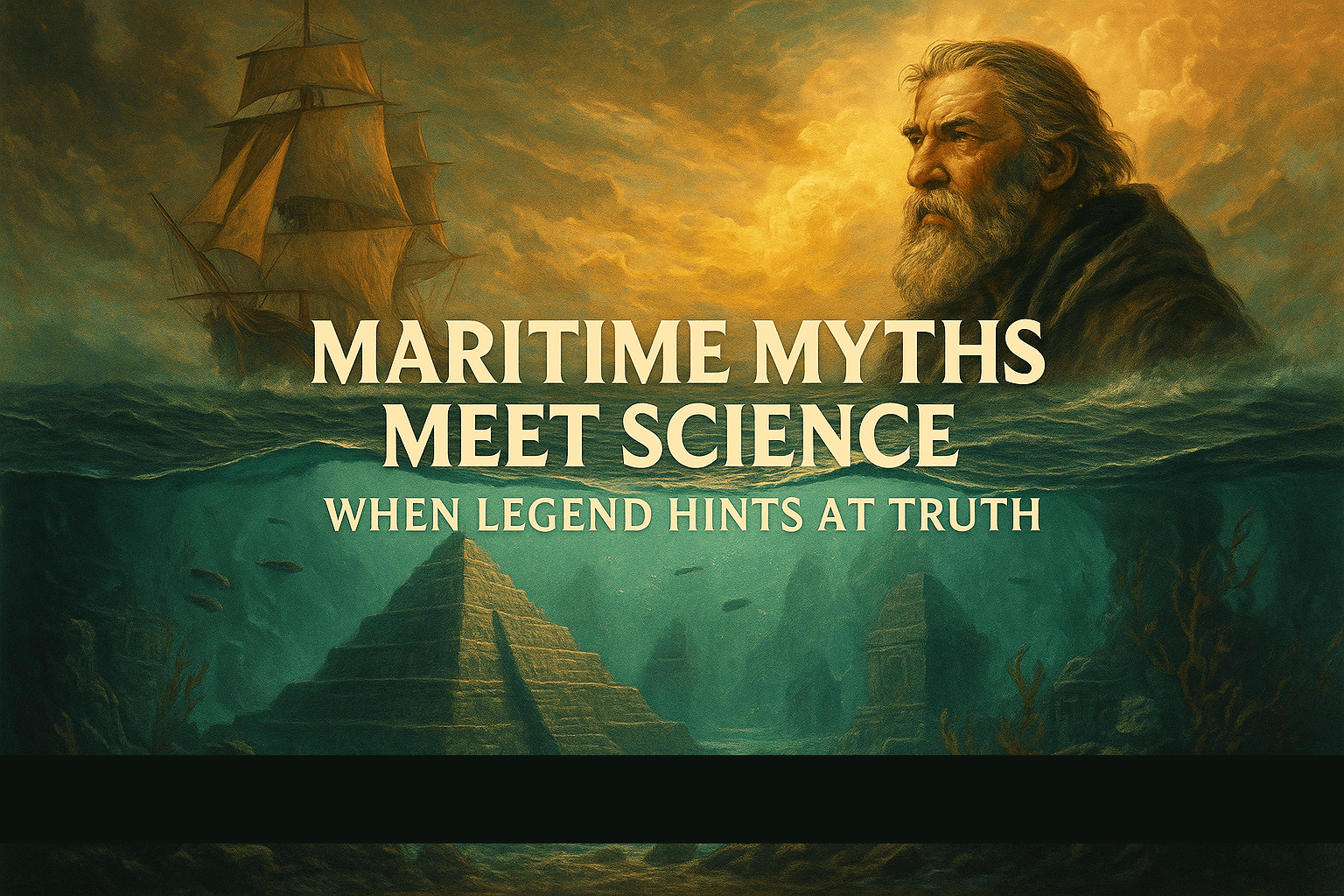
But here’s the kicker: many of these submerged regions haven’t been properly explored. Most archaeological surveys still focus on dry land, even though underwater civilisations may have thrived in now-forgotten places. If pyramidal structures were ever built in these zones, they could easily be lying undetected, masked by layers of silt and centuries of oceanic movement.
Tectonic Activity and Sunken Landmasses
It’s not just water doing the hiding. Plate tectonics have long been responsible for the shifting of landmasses. In rare cases, entire regions have dropped or risen due to seismic activity. Consider the ancient city of Dwarka in India, partially submerged following tectonic changes, or the long-debated Zealandia, a submerged continental mass near New Zealand that’s nearly the size of Australia.
If lost landmasses existed—and some clearly did—it’s not outrageous to suggest that early civilisations may have developed structures on them, including pyramids. While some may scoff at the idea, the Earth has no shortage of real, documented geological shifts that lend credibility to the concept of ancient underwater ruins.
Technology is Finally Catching Up
Here’s where things get exciting. Traditional archaeology isn’t built for the deep sea—but modern tools are changing the game. LiDAR scanning, multi-beam sonar, autonomous underwater vehicles (AUVs), and AI-driven mapping algorithms are revealing complex structures and topographies beneath the sea that were previously impossible to detect.
These tools are already helping uncover sunken cities, ships, and temples. But large, geometric shapes—like the ones seen in Cuba’s disputed sonar scans—might point to even more complex and ancient constructions. Some researchers even suggest there’s potential to find underwater pyramids once believed to be the stuff of folklore.
As more oceanic exploration pushes into deeper and more remote areas, the likelihood of discovering truly ancient ruins—including potentially pyramidal forms—grows steadily. We’re not dealing with dreams anymore—we’re dealing with a planet whose surface is mostly unexplored water.
Maritime Myths Meet Science – When Legend Hints at Truth
Long before sonar scans and deep-sea drones, ancient cultures whispered of sunken worlds and cities lost to the sea. Myths handed down through time speak of catastrophic floods, disappearing lands, and civilisations swallowed by the ocean almost overnight. For centuries, these stories were dismissed as metaphor, but now—thanks to modern exploration—some of them don’t seem quite so far-fetched.

Take Atlantis, for example. First mentioned by Plato in 360 BCE, Atlantis was described as a vast, advanced civilisation that vanished beneath the sea “in a single day and night of misfortune.” Historians have argued over its meaning for centuries—was it allegory, political satire, or a distant echo of something real? Curiously, Plato’s timeline places Atlantis around 9,000 years before his time—right in line with the global flooding events at the end of the Ice Age.
And Atlantis isn’t alone.
In Tamil and Indian lore, the lost continent of Kumari Kandam—a sprawling landmass believed to have connected Madagascar to India—is said to have been the cradle of early civilisation, now sunken beneath the Indian Ocean. Esoteric traditions speak of Lemuria and Mu, prehistoric continents that housed spiritually and technologically advanced societies, both eventually consumed by rising seas or catastrophic shifts.
Mainstream science has long filed these tales under myth. But as researchers uncover more underwater anomalies and question the narrow lens of linear history, a new perspective is emerging—one where maritime mythology and oceanic archaeology might be more intertwined than we thought.
Even the discovery of underwater pyramidal structures in places like the Azores, Bimini Road in the Bahamas, and the Bay of Cambay in India has reignited speculation. While interpretations vary—natural formation, ancient ruin, or something in-between—the sheer volume of these reports has grown too large to ignore outright.
The overlap between pyramids underwater and mythic civilisations may not be coincidence. Across cultures—from Egypt to Polynesia, Mesoamerica to Mesopotamia—the pyramid appears again and again, often linked with the divine, the celestial, or the eternal. That so many different peoples, separated by oceans and millennia, built similar structures—and spoke of great floods—suggests a shared memory deeper than we’ve dared to explore.
For a deeper dive into mythical marine architecture, don’t miss our post on the Mermaid Underwater City: Secrets of the Lost Realms Beneath the Waves.
Pyramids Underwater in Art, Literature & Pop Culture
The idea of pyramids underwater isn’t just confined to sonar scans and seafloor surveys—it’s etched into our art, inked into novels, and flickering across cinema screens. Long before technology began uncovering anomalies beneath the waves, artists and storytellers were already imagining ancient structures resting in silence at the bottom of the sea.
There’s something inherently poetic about the image: colossal pyramids cloaked in coral and mystery, their once-golden peaks now shrouded in blue. It’s a symbol that resonates—one foot in reality, one in myth—and creatives across every medium have harnessed it to explore themes of lost knowledge, forgotten civilisations, and the timeless pull of the unknown.
In literature, authors like Jules Verne and H.P. Lovecraft conjured submerged cities and ancient, godlike ruins beneath the waves. Lovecraft’s R’lyeh, with its strange geometry and half-sunken monoliths, reads eerily like descriptions of actual underwater pyramids discovered by sonar in the Caribbean and Pacific. Modern writers continue the tradition, weaving tales of explorers uncovering structures that defy history and logic—narratives that feel increasingly plausible with every new undersea scan.
In film and television, these ideas surface time and again. From “Stargate Atlantis”, which spins sci-fi around the legend of a submerged alien city, to “Aquaman”, which dives headfirst into a hyper-mythologised Atlantis complete with glowing pyramids and ancient tech—pop culture reflects and fuels the fascination. Even video games like “Assassin’s Creed: Origins” and “Tomb Raider: Underworld” tap into the allure, letting players navigate flooded temples, sunken pyramids, and relics of forgotten worlds.
Visual artists, too, are drawn to the concept. Digital illustrators, fantasy painters, and even muralists have depicted marine pyramids lit by ethereal beams of sunlight or surrounded by strange sea life—imaginings that blur the line between historical speculation and symbolic reverence. These works often stir something ancient in us: a sense that humanity’s story is bigger than the surface we’ve skimmed so far.
What makes the theme so powerful isn’t just its aesthetic—it’s the idea that something sacred, intelligent, and immense might lie buried just out of reach. The ocean becomes not just a setting, but a character—keeper of secrets, bearer of truths, whispering of sunken pyramids and the civilisations that built them long before our own.
What If We’ve Been Wrong All Along? Rethinking Ancient Civilisations
History, as it’s often taught, feels like a straight line—from primitive beginnings to modern brilliance, each chapter neatly tucked into place. But what if that line is more of a spiral? What if our understanding of the past has been filtered through the narrow lens of what survived, not what actually happened?
The growing evidence of potential pyramids underwater, coupled with the discovery of submerged cities, ancient maritime maps, and global flood myths, is forcing even cautious scholars to reconsider the foundations of mainstream timelines. If entire coastlines were lost to post-Ice Age sea level rise, if sophisticated cultures were building along now-drowned shores, then vast parts of our human story could still be hiding beneath the waves.
Alternative historians and independent researchers—people like Graham Hancock, Dr. Robert Schoch, and others—have long argued that ancient civilisations may have been more advanced, more connected, and more aware than traditional archaeology gives them credit for. While their views often spark debate, they’ve also inspired a surge of re-examination across fields from geology to oceanography. And it’s not just fringe voices anymore—some of their hypotheses are now being tested using cutting-edge tools like LiDAR, deep-sea drones, and AI-assisted sediment analysis.
Mainstream institutions are beginning, albeit slowly, to acknowledge the gaps in our timeline. Sites like Göbekli Tepe in Turkey—dating back over 11,000 years—have already shifted the goalposts. If megalithic temples could be built that early, then why not underwater pyramids, lost to the sea when coastlines changed dramatically?
The challenge is this: evidence underwater is difficult, expensive, and time-consuming to reach. But that doesn’t mean it isn’t there. It just means we’ve barely started looking. And perhaps that’s the real story here—not that the past is wrong, but that it’s incomplete.
As more eyes turn to the oceans, and as myths merge with data, we may soon find that some of the world’s oldest legends were never just stories—they were warnings, records, or blueprints from an earlier world. One that built great structures, tracked the stars, and vanished beneath the tides before history even began taking notes.
Real Questions People Ask About Pyramids Underwater
Curiosity about pyramids underwater isn’t confined to conspiracy circles or dusty academic forums—it’s buzzing across search engines, podcasts, YouTube rabbit holes, and Reddit threads. These are the questions people are really asking when they start to sense that history may not be as settled as it seems.
Are there actual pyramids underwater?
Yes—and no. It depends who you ask. There are real underwater formations with pyramidal shapes, such as those off Yonaguni Island, near Cuba, and reported near the Azores. Some experts believe they are natural geological features shaped by tectonic activity and erosion. Others argue they could be man-made structures built by ancient civilisations before catastrophic sea level rise buried them.
No mainstream archaeological institution has confirmed an official “underwater pyramid” as such, but with limited underwater exploration and growing anomalies, the conversation is far from over.
Where have pyramids underwater been discovered?
Reported or investigated locations include:
Yonaguni Monument, Japan
Cuban Underwater City, west of the Guanahacabibes Peninsula
Azores Pyramid, mid-Atlantic ridge (disputed)
Bay of Cambay, India
Bimini Road, Bahamas (not pyramids, but often linked to Atlantis theories)
While not every site has been verified, the consistency in discovery zones—coastal regions now submerged after the Ice Age—suggests patterns worth deeper exploration.
Could ancient civilisations be buried beneath the sea?
Absolutely. Over 70% of Earth’s surface is ocean, and much of what was once habitable land now lies underwater due to sea level rise following the last Ice Age. Human civilisations tend to flourish near coastlines—making it entirely plausible that early advanced cultures, technologies, or structures could be hidden beneath the waves.
Sites like Heracleion (Egypt), Dwarka (India), and Pavlopetri (Greece) prove that cities can and do disappear beneath the sea. Whether pyramids lie among them is the next question.
Is the Yonaguni Monument man-made or natural?
That’s been hotly debated since its discovery in 1986. Japanese marine geologist Dr Masaaki Kimura strongly believes the site is an artificial structure, possibly over 10,000 years old, featuring terraces, steps, and carving-like patterns.
Sceptics argue the monument is a naturally fractured sandstone formation shaped by tectonic forces. But even many mainstream scientists agree it’s one of the most unusual underwater formations ever found—regardless of its origin.
How do archaeologists explore underwater ruins?
With patience, technology, and (a lot of) funding. Underwater archaeology relies on sonar mapping, submersible drones, divers, and, increasingly, LiDAR and 3D modelling. It’s a slow, data-heavy process, especially in deeper waters, where visibility is low and currents are strong.
Because of these challenges, many potentially groundbreaking underwater sites remain unexamined, underfunded, or simply dismissed—making the hunt for underwater pyramids as much about scientific will as technological skill.
Submerged Insights – What the Ocean’s Secrets Teach Us About Ourselves
The fascination with pyramids underwater isn’t just about lost civilisations or sunken cities—it’s about something far more intimate: the possibility that we’ve forgotten who we really are. These stories, these structures—real or rumoured—echo our ancient connection to the ocean as cradle, destroyer, and silent archivist.
The sea hides what time erases. It’s held secrets for tens of thousands of years, keeping watch over ancient ruins, submerged coastlines, and the whispers of early maritime cultures whose names we no longer know. And perhaps that’s why we’re drawn to it. Because every sonar scan, every underwater expedition, every fragment of myth layered with marine silt, reminds us that history isn’t fixed—it’s fluid, like the tides that pulled these stories beneath the surface.
In a world obsessed with progress, underwater pyramids ask us to look backward—carefully, curiously, and without arrogance. To imagine a time when ancient people, connected not by internet cables but by the stars and the sea, may have known more than we give them credit for. These submerged structures—whether carved by hands or sculpted by nature—become symbols of resilience, mystery, and the eternal human urge to reach skyward, even from beneath the waves.
And perhaps the greatest truth they offer is this: that we’re still exploring. Still learning. Still willing to question the surface of things. Just as the ocean reveals its treasures slowly and on its own terms, so too does wisdom emerge—not from certainty, but from the courage to ask what lies beyond the map’s edge.
Inspired by the Deep – Explore Our Ocean Mythology Digital Collection
If the idea of pyramids underwater, lost civilisations, and ocean-buried truths has stirred something in you—you’re not alone. At Seaborn Soul, we channel that same wonder into every piece we create. Our digital collection is a tribute to the myths, symbols, and ancient echoes that still rise with the tide.
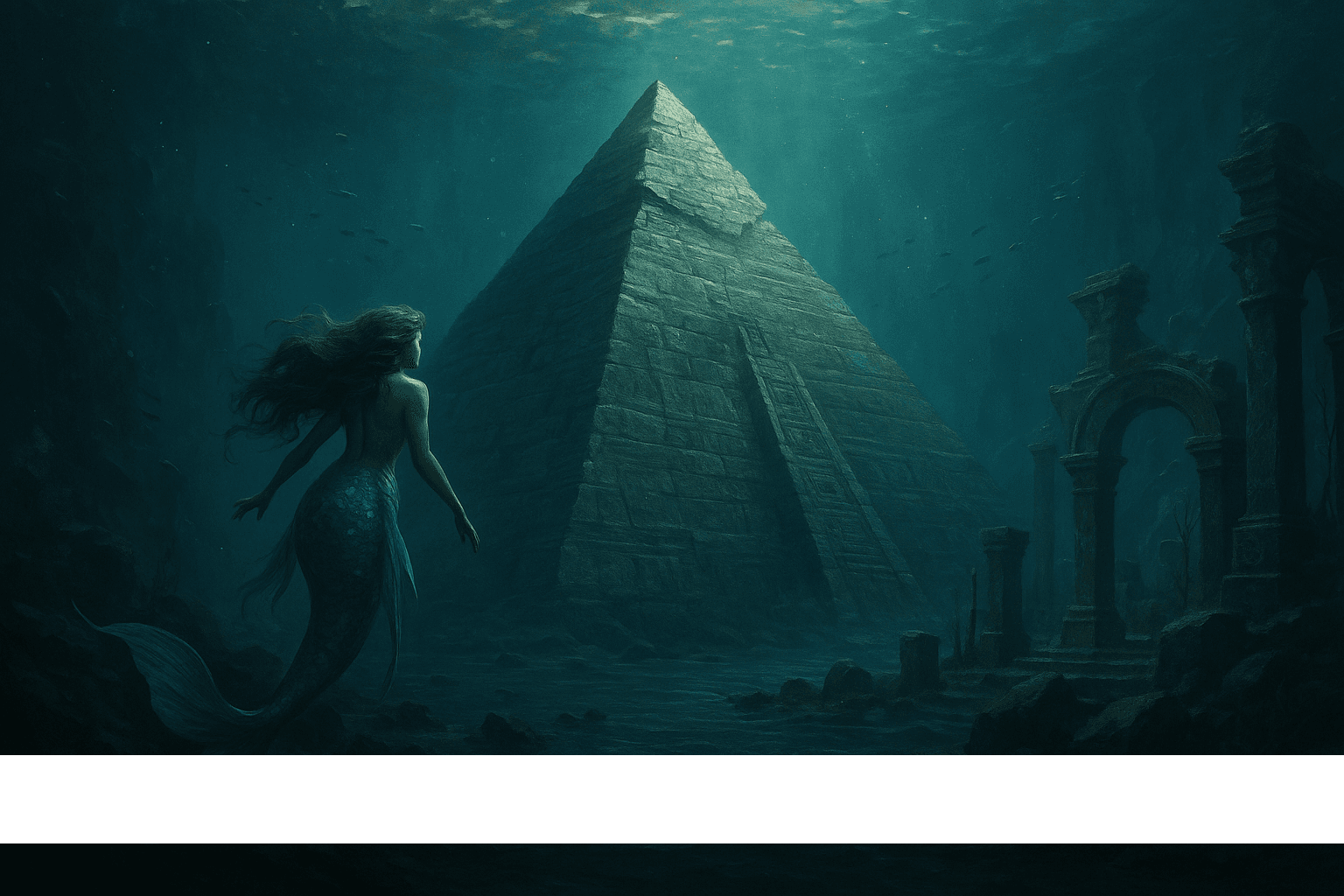
This isn’t just artwork—it’s story, symbolism, and sea-bound soul. Dive into high-resolution digital art inspired by submerged temples, mythical sea creatures, and long-lost cities imagined through the eyes of ancient mariners and modern mystics. Each piece is crafted to evoke a sense of the sacred and the strange, drawing from the depths of global folklore, maritime legend, and the forgotten beauty of drowned worlds.
Looking for something more immersive? Our eBooks on oceanic mythology and maritime folklore offer rich, accessible storytelling for curious minds—unearthing tales of sea gods, cursed ships, and ancient wisdom preserved beneath the waves. Whether you’re a myth-lover, a folklore explorer, or just captivated by what history might have missed, there’s something in this collection that speaks directly to your soul.
Perfect for creators, dreamers, writers, and seekers, our digital collection invites you to bring the mystery of the ocean into your own world—through your screen, your stories, and your imagination. All downloads are instant, high-quality, and designed for those who know that the sea still speaks.
